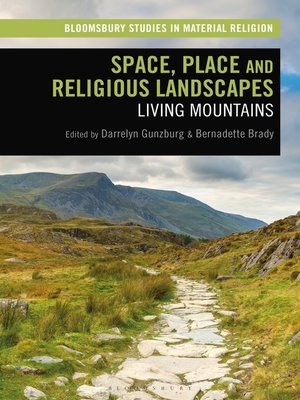Space, Place and Religious Landscapes
ebook ∣ Living Mountains · Bloomsbury Studies in Material Religion
By Darrelyn Gunzburg

Sign up to save your library
With an OverDrive account, you can save your favorite libraries for at-a-glance information about availability. Find out more about OverDrive accounts.
Find this title in Libby, the library reading app by OverDrive.



Search for a digital library with this title
Title found at these libraries:
| Library Name | Distance |
|---|---|
| Loading... |
Exploring sacred mountains around the world, this book examines whether bonding and reverence to a mountain is intrinsic to the mountain, constructed by people, or a mutual encounter. Chapters explore mountains in England, Scotland, Wales, Italy, Ireland, the Himalaya, Japan, Greece, USA, Asia and South America, and embrace the union of sky, landscape and people to examine the religious dynamics between human and non-human entities.
This book takes as its starting point the fact that mountains physically mediate between land and sky and act as metaphors for bridges from one realm to another, recognising that mountains are relational and that landscapes form personal and group cosmologies. The book fuses ideas of space, place and material religion with cultural environmentalism and takes an interconnected approach to material religio-landscapes. In this way it fills the gap between lived religious traditions, personal reflection, phenomenology, historical context, environmental philosophy, myths and performativity.
In defining material religion as active engagement with mountain-forming and humanshaping landscapes, the research and ideas presented here provide theories that are widely applicable to other forms of material religion.
This book takes as its starting point the fact that mountains physically mediate between land and sky and act as metaphors for bridges from one realm to another, recognising that mountains are relational and that landscapes form personal and group cosmologies. The book fuses ideas of space, place and material religion with cultural environmentalism and takes an interconnected approach to material religio-landscapes. In this way it fills the gap between lived religious traditions, personal reflection, phenomenology, historical context, environmental philosophy, myths and performativity.
In defining material religion as active engagement with mountain-forming and humanshaping landscapes, the research and ideas presented here provide theories that are widely applicable to other forms of material religion.







